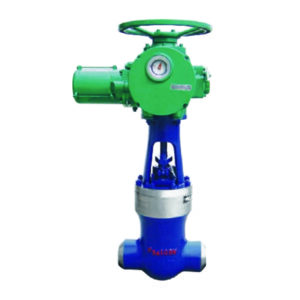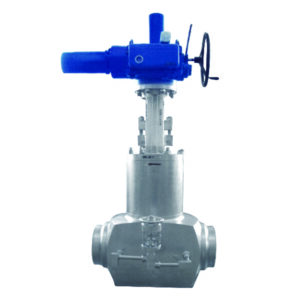About vacuum valve
Vacuum valve model composition:
The correct selection of the valve model and specification requires understanding of the vacuum valve model compilation method; the company’s vacuum valve model compilation method is basically similar to ZBJ78016-89 “Vacuum Valve Model and Compilation Method”. The product model consists of two parts: the basic model and the auxiliary model, separated by a dash in the middle. The model composition is as follows:
Represents the range of vacuum degree used by the product, expressed by the first letter of the Chinese Pinyin keyword (in uppercase)
1. The representative vacuum range is: low vacuum 105~10-1Pa (760~10 Torr) – D;
2. The representative vacuum range is: high vacuum 105~10-4Pa (760~10-6 Torr) -G;
3. The representative vacuum range is: for ultra-high vacuum 10~10-7Pa (760~10-9 Torr) – C;
Represents the structural form of the valve plate or the functional category of the product, and is represented by the first (or second) letter (in uppercase) of its keyword in Chinese Pinyin, such as:
C insert valve, Q charging valve, D flapper valve, U ball valve, F flap valve, W trim valve, I butterfly valve, Y differential pressure valve, M diaphragm valve;
Represents the product-driven mode, represented by the first letter of the Chinese Pinyin keyword (in uppercase):
S Manual, D Electric, Q Pneumatic, C Magnetic, Y Hydraulic;
Represents the valve channel form, represented by the first letter of the Chinese Pinyin keyword (in uppercase):
Z straight valve, J angle valve, S three-way valve;
Exception: Only the valve with inflatable uses the Chinese Pinyin capital letter Q as the code, and other types of valves do not use the symbol as the code.
Represents product specification parameters – nominal diameter, expressed in Arabic numerals, and the unit is (mm):
Such as: DN 16mm, 100mm, 500mm, etc. are represented by 16, 100, 500, etc.
Special case: Very few products use Arabic numerals to indicate their performance parameters, such as “30” in the model of GW-30-T high vacuum fine tuning valve, which means that the maximum adjustable volume of the high vacuum fine tuning valve is 30 Torr.L/S.
The corner note represents the sealing structure of the shaft seal. At present, only the stainless steel bellows is used as the shaft seal with the lowercase letter b in Pinyin as the code name, and other sealing structures (such as rubber seals, PTFE, etc.) are not represented by letters.
Only individual products (such as vacuum (pressure) ball valves) use bracketed capital letters to indicate the connection method or the code of the valve’s main sealing material.
( KF ) means using the GB4982 “Clamping Type Vacuum Quick Release Flange” standard, ( G ) means using the GB7306 “Cylinder Pipe Thread” standard, ( F ) means using the GB6070 “looper vacuum flange” standard, ( JB ) means Adopting the JB919-75 “Vacuum Flange” standard H or H(I) means that the joints at both ends of the valve are of welded structure, H(II) means that one end of the valve is of welded structure, and the other end of the valve is of a plug-in structure with a rubber tube inserted ;
Products designed by analogy and so on. Here are a few examples:
1. GM-25H(Ⅰ) high vacuum diaphragm valve, nominal diameter 25mm, welded structure at both ends.
2. CCQ-150 pneumatic ultra-high vacuum plug-in valve, with a nominal diameter of 150mm.
3. GID-250 electric high vacuum butterfly valve, nominal diameter 250mm.
4. GUQ-40(KF) pneumatic high vacuum (pressure) ball valve, with a nominal diameter of 40mm and a connection method of GB4982 “Clamping Vacuum Quick Release Flange” DN40 quick release flange.
5. GD-J100b high vacuum flapper valve, with a nominal diameter of 100mm, the conduction form is an angle type, and the shaft seal form is a stainless steel metal bellows.
6. DYC-JQ50 electromagnetic vacuum differential pressure valve, the nominal diameter is 50mm, and the conduction form is angle type. (Low vacuum generally only needs the word vacuum).
7. DDC-JQ80 electromagnetic vacuum with inflation valve, the nominal diameter is 80mm, and the conduction form is angle type. (Low vacuum generally only needs the word vacuum).
8. GDC-J25b electromagnetic high vacuum flapper valve, the nominal diameter is 25mm, and the conduction form is angle type. The shaft seal is in the form of a stainless steel metal bellows.
The vacuum valve has the following characteristics:
The pressure is below atmospheric pressure, and the pressure drop across the disc cannot exceed 1 kgf/cm2. The working temperature of the medium depends on the process in which the device is used. The temperature generally does not exceed the range of -70 ~ +150℃.
The most basic requirements for this type of valve are to ensure a high degree of tightness of the connection and the compactness of the structure and gasket material.
According to the medium pressure vacuum valve can be divided into four groups:
1) Low vacuum valve: medium pressure p=760~1 mmHg.
2) Medium vacuum valve: p=1×10-3 mmHg.
3) High vacuum valve: p=1×10-4 ~1×10-7 mmHg.
4) Ultra-high vacuum valve: p≤1×10-8 mmHg.
As a closed-circuit valve with a diameter of less than 250 mm, the vacuum bellows globe valve with linear motion of the valve stem is widely used. Gate valves are subject to greater restrictions, but this is mainly for large diameters. Also available are ball plug valves (ball valves), plunger valves and butterfly valves. The plug valve used as a vacuum valve has not been promoted, because the plug valve needs to be lubricated with oil, so that the oil vapor may enter the vacuum system, which is not allowed. The vacuum valve can be controlled manually and remotely, as well as electric, electromagnetic drive (solenoid valve), pneumatic and hydraulic control.
Vacuum valve closures are sealed with rubber seals or metal seals. The bellows of the bellows globe valve is made of stainless steel, high zinc brass JI80, plastic and other materials. The closing part of the globe valve with small diameter (below 10 mm) can be sealed by diaphragm. Spherical plug valves can be used for low and medium vacuum.
parameter definition
Nominal diameter: (nominal diameter), also known as mean outside diameter (mean outside diameter), indicating the symbol DN, is the general diameter of various pipes and pipeline accessories. Pipes and pipeline accessories of the same nominal diameter can be connected to each other and are interchangeable. It is not the outer diameter or inner diameter of the pipe in the actual sense, although its value is close to or equal to the inner diameter of the pipe, in order to unify the connection size of pipes and fittings , using the nominal diameter (also known as nominal diameter, nominal diameter). For example, welded steel pipes can be divided into thin-walled steel pipes, ordinary steel pipes and thickened steel pipes according to thickness. Its nominal diameter is neither the outer diameter nor the inner diameter, but a nominal size that approximates the inner diameter of ordinary steel pipes. Each nominal diameter corresponds to an outer diameter, and its inner diameter varies with thickness. The nominal diameter can be expressed in metric mm or in imperial in. Pipeline accessories are also expressed by nominal diameter, which is the same as seamed pipe.
2. Nominal pressure: (Nominal pressure), indicating the symbol PN, the maximum allowable working pressure when applied at a certain temperature. For the control valve with carbon steel body, it refers to the maximum allowable working pressure when applied below 200°C; for cast iron valve body, it refers to the maximum allowable working pressure when applied below 120°C; for the control valve with stainless steel body, it refers to below 250°C Maximum allowable working pressure when applied. When the working temperature increases, the pressure resistance of the valve body will decrease. For example, a carbon steel control valve with a nominal pressure of 6.4MPa (PN64) has a withstand pressure of 5.2MPa when used at 300°C, 4.1MPa when used at 400°C, and 2.9MPa when used at 450°C. . Therefore, the determination of the nominal pressure of the control valve should not only be based on the maximum working pressure, but also according to the maximum working temperature and material characteristics, not only the nominal pressure is greater than the working pressure.
The role of vacuum valve in vacuum system
1. Switch the gas circuit, when valve 1 and valve 4 are closed and valve 2 is open, the mechanical vacuum pump III evacuates the container I, and the airflow flows through the pre-vacuum pumping pipeline; when valve 2 is closed and valve 4 is opened, the mechanical pump can The diffusion pump is evacuated separately; when valve 1 and valve 4 are opened at the same time, the diffusion pump and the mechanical pump can work at the same time to evacuate the container, and the airflow flows through the diffusion pump at this time. It can be seen that the function of the valve in this operation is to switch the gas path and change the flow path of the airflow.
2. Control the air flow and adjust the degree of vacuum In Figure 1, adjust the opening angle of the valve cover of valve 1 to adjust the air flow through the pipeline; close valve 2 and valve 4, and the mechanical pump can be supplied to the mechanical pump through the air release valve 3. The inlet of III is put into the atmosphere; the vacuum degree in the container can be adjusted through the air release valve 5.
3. Quantitative inflation, there is a small hole with a certain volume on the plunger of the glass valve. When the small hole turns to the right and connects with the high-pressure gas cylinder, the small hole can be filled with high-pressure gas; when it turns to the left and connects with the vacuum container , put the volume of high-pressure gas into the container, which plays the role of quantitative inflation.
There are many types of vacuum valves, which are usually classified according to the function, structure, driving method, material and use of the valve.
The use of general vacuum valve
The electromagnetic vacuum belt charging valve and the electromagnetic vacuum differential pressure valve are vacuum valves specially used to prevent the mechanical vacuum pump from returning oil. They are installed at the air inlet of the mechanical vacuum pump and open and close synchronously with the pump. Generally, it cannot be used in other places, that is to say, it cannot be used for degassing in a vacuum system. The advantage of choosing Niwei electromagnetic vacuum differential pressure valve is that the power consumption is small and energy saving; the valve body with DN≤50 is made of aluminum alloy, which is light in weight, small in size and fast in closing speed of the valve plate.
Baffle valves are used in vacuum piping where angle and tee connections are made. The driving mode is hand, gas, electromagnetic and electric, which is determined by the user. Among them, the GDC-J electromagnetic high vacuum flapper valve is sealed with metal bellows, which has a wide range of applications and can also be used as a gas filling valve; the installation position can be arbitrary, it can be reversed to an atmospheric pressure, and there is a feedback signal output.
The plug-in valve is used in the occasions where the vacuum degree is high or the pipe size is required. Full conduction, valve leakage rate is 10-7Pa.L/S, two-way sealing. The driving mode of hand, gas and electric is determined by the user. Both pneumatic and electric have signal feedback devices.
Diaphragm valve and ball valve are straight-through type, and can be used in situations where positive pressure and vacuum coexist. The driving mode of hand, gas and electric is determined by the user.
The butterfly valve is in the form of straight-through, and the three driving modes of hand, gas and electricity are determined by the user. The opening angle of the manual butterfly valve can be adjusted arbitrarily; the opening angle of the intelligent pneumatic and electric butterfly valve can also be adjusted arbitrarily.
Conditions of use of the valve:
1. The medium is pure air or non-corrosive gas.
2. The temperature of the medium is determined by the extreme temperature of the rubber used.






Reviews
There are no reviews yet.